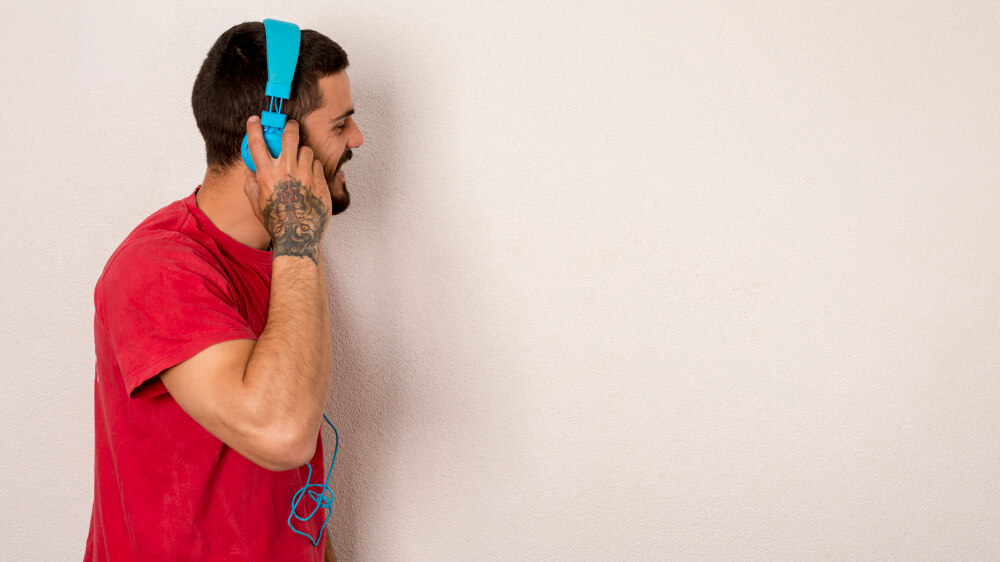In today’s fast-paced world, the importance of a peaceful environment cannot be overstated. Whether you’re a busy professional working from home, a parent with young children, or simply someone who enjoys quiet moments, soundproofing your space can greatly enhance your quality of life. One of the most effective ways to achieve this is through soundproof drywall. In this comprehensive guide, we’ll delve into everything you need to know about soundproofing drywall like a pro, ensuring your home becomes a serene sanctuary.
What is Soundproof Drywall?
Before diving into techniques, let’s clarify what soundproof drywall is. Unlike standard drywall, soundproof drywall is engineered to reduce sound transmission between rooms. This specialized drywall typically incorporates additional materials that increase its mass and density, making it far more effective at absorbing sound waves. By using soundproof drywall, you can minimize unwanted noise, whether from inside or outside your home.
Types of Soundproof Drywall
There are several types of soundproof drywall available, each designed to address different soundproofing needs. Here are a few popular options:
Mass-Loaded Vinyl (MLV) Drywall: This type of drywall has a layer of mass-loaded vinyl added, which enhances its soundproofing properties by increasing its weight.
Double Layer Drywall: This method involves installing two layers of standard drywall with sound-dampening compounds in between. The added mass and separation reduce sound transmission effectively.
Gypsum Board with Soundproofing Properties: These boards are specifically designed to absorb sound and often feature a sound-dampening core.
Why Soundproof Your Space?
Before getting into the how-to, let’s discuss the benefits of soundproofing your space:
- Increased Privacy: Soundproofing helps prevent sounds from traveling between rooms, offering more privacy for personal conversations and activities.
- Improved Focus and Concentration: If you work from home or study, reducing background noise can help you concentrate better and increase productivity.
- Enhanced Comfort: In multi-family living situations, soundproofing can significantly minimize disturbances from neighbors, allowing for a more enjoyable living environment.
- Higher Home Value: A quieter home is often more appealing to potential buyers, making soundproofing a smart investment.
- Noise Control: Whether it’s loud traffic or neighbors, soundproofing can help create a peaceful retreat away from the hustle and bustle outside.
Materials You Will Need to Soundproof The Drywall
To effectively soundproof drywall, you’ll need the right materials. Here’s a list to help you get started:
- Soundproof Drywall: Opt for high-density drywall or specialized sound-dampening drywall for best results.
- Acoustic Caulk: This flexible sealant is essential for sealing gaps and cracks to prevent sound leakage.
- Resilient Channels: These metal channels decouple the drywall from the wall studs, significantly reducing sound transmission.
- Soundproofing Clips: Used with resilient channels, these clips further isolate the drywall from vibrations.
- Acoustic Insulation: Choose high-density insulation, like fiberglass or mineral wool, to fill wall cavities and absorb sound.
- Green Glue: This is a popular soundproofing compound that can be applied between drywall layers to dampen sound transmission.
- Drywall Screws: Ensure you have enough screws for hanging your drywall securely.
Step-by-Step Guide to Soundproofing Drywall
Now that you’re equipped with the necessary materials, let’s walk through the step-by-step process of soundproofing drywall like a pro. Follow these instructions carefully to achieve optimal results.
Step 1: Prepare Your Space
Preparation is critical to ensuring a successful soundproofing project. Here’s what you need to do:
- Remove Existing Drywall: If you’re retrofitting an existing wall, carefully remove the old drywall using a pry bar and utility knife. Be cautious of electrical wiring and plumbing.
- Inspect for Damage: Check the studs and framing for any damage or rot that may need repair before you proceed.
- Clean the Area: Dust and debris can interfere with the installation of soundproofing materials, so ensure the area is clean and clear.
- Turn Off Power: If you will be working near electrical outlets or fixtures, always turn off the power for safety.
Step 2: Install Acoustic Insulation
Adding acoustic insulation within the wall cavities is one of the most effective ways to soundproof drywall:
- Choose the Right Insulation: High-density fiberglass or mineral wool insulation are excellent choices for sound absorption.
- Cut to Fit: Measure and cut the insulation to fit snugly between the studs. Make sure it fills the entire cavity without being compressed, as compression can reduce its soundproofing effectiveness.
- Install the Insulation: Press the insulation into the wall cavity, ensuring a snug fit. If you have multiple cavities, repeat this process for each.
Step 3: Install Resilient Channels
Resilient channels are essential for creating a sound barrier:
- Measure and Cut: Measure the height of your wall and cut the resilient channels to fit. The channels should be installed horizontally across the studs.
- Attach the Channels: Using drywall screws, attach the resilient channels to the wall studs. Make sure the channels are perpendicular to the studs to allow for proper sound decoupling.
- Spacing: Install the channels at intervals of 24 inches to ensure adequate support for the drywall.
Step 4: Apply Acoustic Caulk
Before hanging the drywall, it’s essential to seal any gaps and cracks with acoustic caulk:
- Seal Gaps: Apply a generous bead of acoustic caulk around the perimeter of the wall, focusing on where the wall meets the floor, ceiling, and adjacent walls.
- Fill Any Cracks: Inspect the wall for any small cracks or openings and fill them with caulk to create a soundproof barrier.
Step 5: Hang the Soundproof Drywall
Now it’s time to install your soundproof drywall:
- Measure and Cut: Measure the height and width of your wall and cut the drywall to fit.
- Lift and Secure: With a helper, lift the drywall into place and secure it to the resilient channels using drywall screws. Be sure to screw into the channels, not the studs, to maintain the sound isolation properties.
- Stagger the Joints: If you’re using multiple sheets of drywall, stagger the joints for better soundproofing and structural integrity.
Step 6: Apply Green Glue (Optional)
For even better soundproofing results, consider using Green Glue between layers of drywall:
- Apply Green Glue: If you are using two layers of drywall, apply Green Glue to the back of the second layer before securing it to the first layer.
- Follow Instructions: Each product has specific instructions, so be sure to follow the manufacturer’s guidelines for best results.
Step 7: Finish the Drywall
Once the drywall is hung, it’s time to finish it:
- Tape and Mud: Apply joint tape and joint compound to the seams, feathering it out for a smooth finish.
- Sand: Once the compound is dry, sand the seams for a seamless appearance.
- Prime and Paint: After sanding, prime and paint the drywall as desired.
Step 8: Test for Soundproofing Effectiveness
Once everything is complete, it’s essential to test the soundproofing effectiveness:
- Check for Leaks: Play music or make noise on one side of the wall and listen on the other side for any sound leakage.
- Make Adjustments: If you notice any areas where sound is leaking through, consider adding more acoustic caulk or additional soundproofing materials.
Additional Soundproofing Techniques to Enhance Your Soundproofing Efforts
In addition to using soundproof drywall, there are other techniques you can implement to enhance soundproofing:
Use Carpeting and Rugs
Adding thick carpeting or rugs can significantly reduce noise levels in a room by absorbing sound. This is particularly effective on floors above other living spaces.
Soundproof Windows
If outside noise is an issue, consider soundproofing your windows with double-pane glass or window inserts designed for noise reduction.
Acoustic Panels
Installing acoustic panels on your walls can further absorb sound waves, making your space quieter. These panels come in various designs and colors, allowing you to enhance your décor while improving sound quality.
Heavy Curtains
Heavy, lined curtains can help reduce sound transmission through windows, providing an additional layer of insulation against noise.
Door Sweeps and Seals
Ensure that your doors are soundproofed as well by installing door sweeps and weatherstripping to minimize sound leakage.
Decoupling Techniques
If you’re working with existing walls, consider decoupling techniques that separate the drywall from the framing, using methods like sound clips and isolation pads.
Conclusion
Soundproofing drywall can seem like a daunting task, but with the right materials and techniques, it’s a project you can tackle like a pro. Whether you’re looking to create a serene home office, a quiet nursery, or simply want to enjoy your personal space without distractions, soundproof drywall can make all the difference. By following the steps outlined in this guide, you’ll be well on your way to achieving a peaceful environment that enhances your quality of life.
With patience and attention to detail, your soundproofing project can transform your home into a sanctuary of tranquility. Don’t forget to evaluate and fine-tune your soundproofing methods to ensure optimal results. Happy soundproofing!
By utilizing the techniques and strategies mentioned above, you can ensure that your soundproofing project not only meets your needs but also stands the test of time. Remember, the goal is to create a comfortable and quiet environment where you can live, work, and relax without the distractions of outside noise. With a little effort, you can achieve the peace and quiet you deserve!

